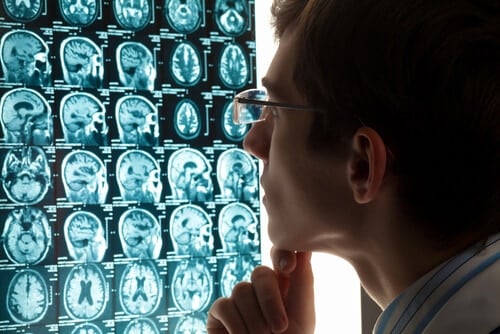Brain Aneurysm Diagnosis Errors
Last updated Friday, November 24th, 2023

Brain aneurysm results from the progressive weakening and eventual rupture of the walls of a cerebral artery. The ensuing hemorrhage is often fatal and usually disabling. Because brain aneurysms can occur without prior warning or symptoms, it is important to recognize that not every failure to diagnose such an event represents actionable medical malpractice. There are, however, many cases each year in which doctors and emergency room personnel inadvertently harm patients by neglecting to consider a brain aneurysm diagnosis despite obvious symptoms or risk factors.
At Wocl Leydon, LLC, our lawyers combine an in-depth understanding of the complex legal and medical issues implicated in brain aneurysm misdiagnosis claims with outstanding litigation, negotiation and trial skills. Our ability to investigate, identify and prove the facts legally and medically necessary to establish liability in these cases supports our reputation as one of Connecticut’s most respected personal injury law firms and a frequent choice for referrals from other attorneys.

Get Your FREE Case Review,
In Person or Virtually Online
Warning Signs Of A Brain Aneurysm
Brain aneurysm symptoms include:
- severe headache,
- nausea, vomiting,
- pain or stiffness around the neck,
- numbness,
- vision problems,
- eye pain,
- memory or cognitive difficulties,
- coordination problems and fatigue.

Get Your FREE Case Review,
In Person or Virtually Online
Determining whether these symptoms are being caused by an aneurysm or by something else usually requires a CT scan.
If the CT scan demonstrates signs of subarachnoid hemorrhage, an aneurysm is likely the correct diagnosis. If the CT scan is negative but a ruptured cerebral artery is still suspected, a lumbar puncture should be ordered for detecting the presence of blood in the cerebrospinal fluid surrounding the brain and spinal cord.
When medical malpractice lawyers work with experienced physicians to investigate the role of medical negligence in causing a brain aneurysm, the central challenge is to determine whether the treating or consulting doctors should have known to use a CT scan, lumbar puncture or other diagnostic tools to detect the risk of aneurysm in light of the facts known at the time of the event.
Risk factors that should often place doctors on notice for the possibility of cerebral aneurysm include known hypertensive vascular disease, atherosclerosis, congenital defects or head trauma. Physicians in positions to make accurate diagnoses based on these risk factors include family practitioners, emergency room doctors, radiologists, neuroradiologists, pediatricians, neurologists and geriatric specialists, just to name a few.
Our attorneys work with outstanding medical specialists to determine which of these practitioners had the opportunity to avoid the risks of brain aneurysm in your case. If our expert review of your medical records indicates a strong likelihood that the failure to identify and address the risks of aneurysm represented departures from a recognized standard of care, we can pursue your claim for medical malpractice damages.
Connecticut Brain Aneurysm Misdiagnosis Attorneys: Call 203-333-3339
For additional information about the ways our lawyers investigate medical negligence in cases of failure to diagnose brain aneurysm, contact the Stamford or Bridgeport offices of Wocl Leydon, LLC for a free consultation.
We represent clients statewide and handle all of our medical malpractice cases on a contingency basis. There are no legal fees to pay unless we win.

